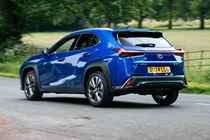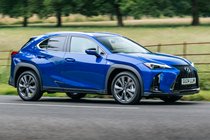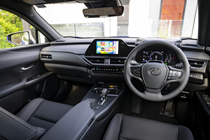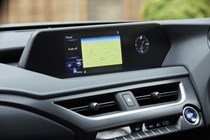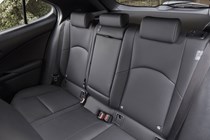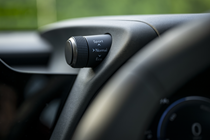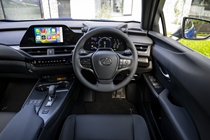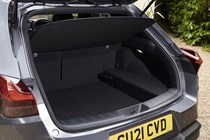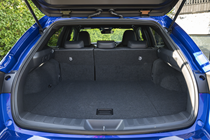
Lexus UX engines, drive and performance
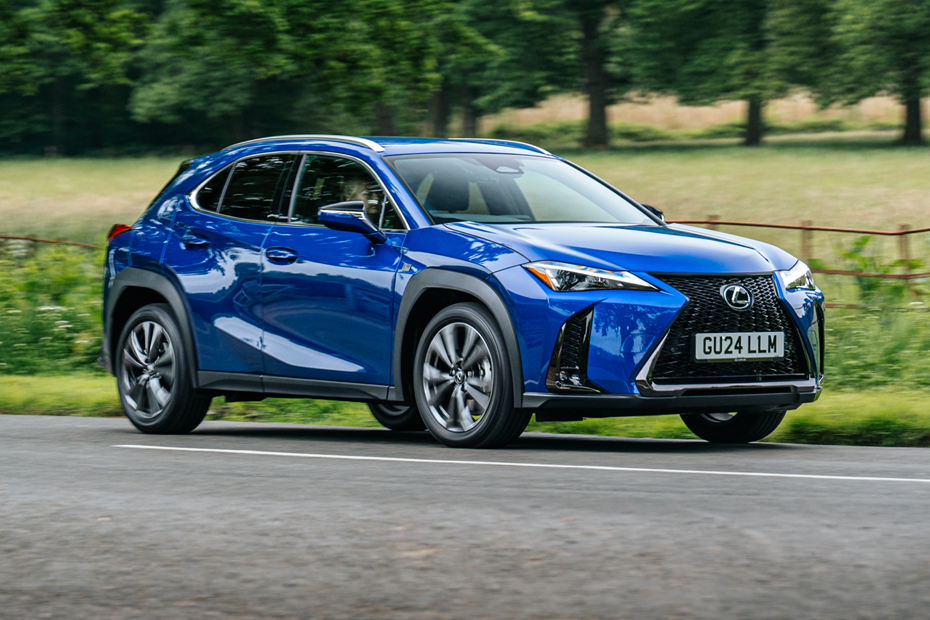
- Just one engine option – a 2.0-litre petrol hybrid
- Badged UX 300h, it’s quiet and refined
- Performance best described as adequate
Hybrid engine
Not counting the 100% electric version (see our UX 300e review), the only engine available to UK buyers of the Lexus UX is still the 2.0-litre in-line four-cylinder, only now it’s badged the 300h. It produces 199hp – 15hp more than the old 250h – and 190Nm of torque from the engine alone. The higher overall power is attributed to a new lithium-ion battery pack with fewer cells than the 250h’s offering but higher voltage.
What does all that translate to on the road? A 0-62mph time that’s 0.4 seconds quicker with just front-wheel drive. Go for the E-Four all-wheel drive model, which adds a second electric motor at the rear to drive the back wheels but gains no additional power, and 0-62mph drops even more dramatically to 7.9 seconds from 8.7. Power is delivered via an E-CVT automatic transmission that’s standard on all models.
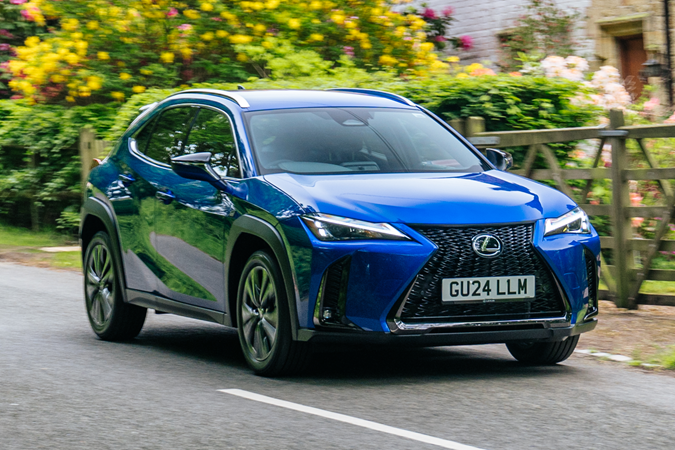
Top speed on all Lexus UX models is limited to 110mph.
What’s it like to drive?
- More like a hatchback to drive than an SUV
- Body roll well contained, suspension comfortable
- Doesn’t feel especially fast, but…
Floor the throttle, and although the revs leap to the engine’s optimum power band thanks to the E-CVT auto, it seems to take this SUV a little while to get going. Once on the boil, however, it rushes forward smoothly and without fuss, and actually accelerates quite keenly. The lack of drama means the indicated speed can occasionally take you by surprise on the motorway.
While not transformative, the UX300h’s extra poke doesn’t go unnoticed nor underappreciated. Don’t get us wrong, this is not an especially rapid car, but the 300h feels as though it has a little more beneath the skin to help dig you out of corners when needed. The UX is incredibly quiet and refined on the road, while comfortable too. It can handle great speed with a deft nonchalance, surging ahead with little to no fuss.
The transition between electric power and the petrol engine is also commendably smooth – in some instances the only obvious sign is the EV light on the dashboard. Keep an eye on this, and you may be surprised at how often the engine is switched off, for while the UX 300h doesn’t have a lengthy permanent electric range it does make the most of its hybrid capabilities to deliver near-silent running and genuine efficiency.
The E-CVT gearbox is, for the most part, highly capable and responsive. If you really stamp your foot down when pulling onto a motorway, the engine will sing its seemingly never-ending crescendo as the transmission puzzles over what it needs to do, but in most driving situations, the CVT is perfectly competent.
The handling is a little blunt – there’s not much feel through the steering but the UX will change direction in a fairly positive fashion, and stays impressively flat in the corners for an SUV. While adaptive suspension is offered, upping the dynamics slightly, rather than hurtling around bends the UX is at its best when cruising in comfort. Something it does with a certain amount of panache. The 300h now has a strengthening radiator brace that was absent on the old generation, but you probably wouldn’t notice any change in handling characteristics.
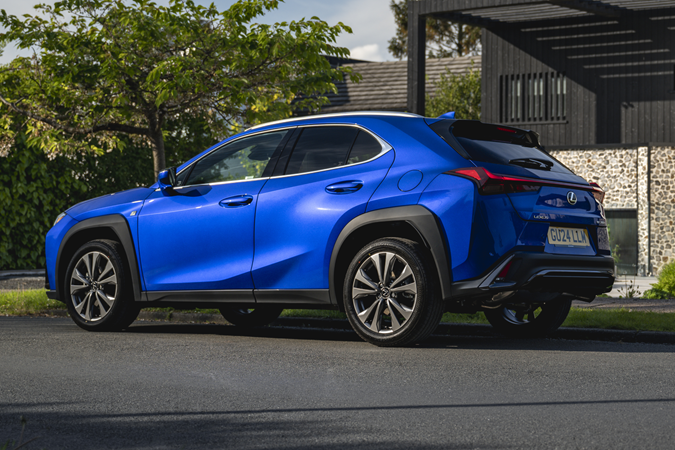
If comfort is your thing, best to avoid the F-Sport trim level, which combines 18-inch alloy wheels with firmer suspension. This is noticeably harsher over poor surface, if still more forgiving than rival Audi S line and BMW M Sport models. These compensate by being more fun in the corners; the UX may be athletic, and it may offer a choice of driving mode settings, but it is not an enthusiastic machine.
Still, a tight turning circle and compact dimensions make it a cinch to drive around town – where the hybrid system particularly excels.
There is no pretence of off-road ability here at all, and on the road, the front- and all-wheel drive versions feel very similar in all but the most extreme grip situations. The E-Four directs power to rear wheels only when required, and for the majority of the UK that probably makes it an unnecessary expense.






